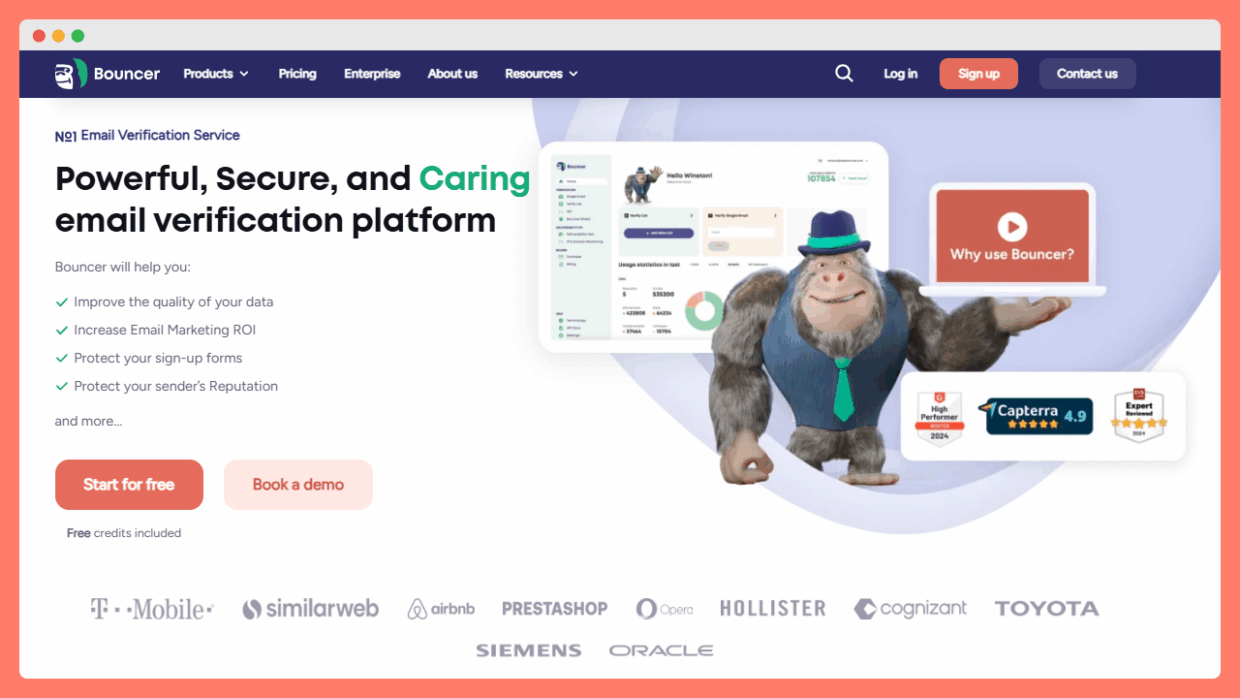But there’s a harsh truth underneath: B2B email data decays faster than almost any other business asset.
Many providers pride themselves on “quality data,” but the reality of economics and human behavior means no dataset can stay perfect for long. The challenge for data providers isn’t whether data goes stale — it’s how to manage that decay intelligently.
The hidden decay of B2B email addresses
Every year, 10–20% of business email addresses become undeliverable. In some industries, the percentage is even higher.
Why does this happen?
- Job mobility: Professionals switch roles, get promoted, or leave companies altogether.
- Company churn: Businesses close down, rebrand, or restructure.
- Layoffs: Large-scale workforce reductions instantly wipe out thousands of email addresses.
In practice, this means a database that looked clean six months ago can suddenly return a worrying bounce rate. And because of the sheer scale — hundreds of millions or even billions of records — keeping everything current is far more difficult than buyers assume.

Why “perfect” data isn’t possible
From the outside, the solution seems obvious: just re-verify everything regularly. But in reality, that’s not viable.
To maintain consistently high deliverability, email verification would need to run across entire datasets every two to four weeks. At enterprise scale, this comes with astronomical costs. Even the most efficient verification processes become uneconomical when repeated at that frequency.
That’s why more providers are shifting toward workflows where large-scale verification is supplemented with an intelligent layer of on-demand checks. With Bouncer, that becomes both affordable and scalable — providers can verify what matters most, when it matters, without breaking their business model.

The frustration of buyers
From a client’s perspective, it feels unfair: “I already pay for this data — why should I pay again to verify it?”
The frustration is understandable. But once you see the scale of the challenge, it makes sense why providers can’t simply absorb the cost. Even with bulk pricing, verifying millions of records on a rolling basis would break the economics of most data businesses.
That’s why more providers have started to adopt a different approach: building verification into the workflow, but not pretending it’s free.
Smarter strategies for data providers
Instead of chasing the impossible dream of “always perfect” datasets, providers can take smarter, more sustainable approaches.
1. Position as premium
One path is to embrace verification as a differentiator. Providers can bake verification into their pricing and market themselves as “always clean.” Clients pay more, but they know they’re buying peace of mind.
This requires courage to reframe value: it’s not “cheap data at scale,” but “trusted data that protects your reputation.” With regulations tightening and inbox providers growing stricter, that positioning can be powerful.
2. Maintain high-touch subsets
Another approach is to focus resources where they matter most.
Think of it like inventory management:
- A car manufacturer keeps common replacement parts in stock because customers need them often. Rare parts are produced only when ordered.
- A restaurant keeps its most popular dishes ready at all times, but a rare specialty may come frozen and require extra preparation.
Data works the same way. Providers should:
- Keep frequently requested subsets (for example, high-demand industries or roles) fresh and verified.
- Handle rare or niche subsets on demand when a client requests them.
This way, clients still get the quality they need, without the provider sinking endless costs into maintaining low-demand data.
3. Be transparent about freshness
The worst outcome is a surprise. Clients can live with slightly older data if they know what they’re getting. What frustrates them is paying for “guaranteed accuracy” and receiving high bounce rates.
Providers who clearly label which records are recently verified, which are older, and which can be verified on request create trust. Transparency turns a weakness into a service feature.
Why shared responsibility is the future
Ultimately, data freshness isn’t a problem one side can solve alone.
- Providers can’t afford to re-verify their entire database every month.
- Clients can’t afford to send campaigns that bounce and damage their sender reputation.
The most sustainable model is shared responsibility:
- Providers maintain high-demand segments with strong quality.
- Clients verify subsets when they need guaranteed deliverability.
Instead of pointing fingers, both sides share the task of keeping data usable.
The economics behind the problem
It’s worth pausing on why this problem exists at all. Unlike consumer emails, which can stay stable for years, business emails are tied to employment. And employment is dynamic. In a global economy where job tenure is shrinking, startups rise and fall overnight, and layoffs hit in waves, B2B email addresses are inherently unstable.
Add to that the sheer size of today’s data businesses. When you’re managing hundreds of millions of contacts, even a modest decay rate translates into tens of millions of invalid addresses every year.
This is why providers who promise “always fresh data” without clear verification processes are overselling. The economics simply don’t work.
Final thought
The decay of B2B data isn’t a flaw — it’s a fact of life. The providers who thrive will be those who adapt.
- Premium positioning: offering always-verified data at a higher price.
- Subset focus: keeping core datasets pristine, handling edge cases on demand.
- Transparency: setting realistic expectations with clients.
At Bouncer, we help data providers turn this reality into a strength: offering the right level of quality at the right cost, with scalable verification that keeps both economics and customer trust in balance. Get in touch with us today to learn more.


